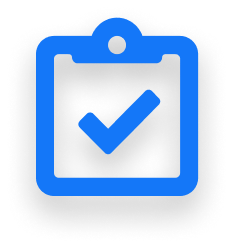Weld Inspector Duties
Weld inspector duties vary depending on the industry but generally consist of activities before, during, and after welding occurs. Common duties include verification of welding procedures and certifications before welding begins, visual inspection of welds during and after welding is complete, and documentation of inspections performed.
The phases of weld inspection are broken down into the following categories:
Job Setup
Before Welding
During Welding
After Welding
Inspection Paperwork
Good written and verbal communication is also essential for a weld inspector to work effectively with engineers, welders and management.
To be an effective weld inspector it is crucial to become familiar with the different industries and the welding codes aligned with them. It is also essential to be able to know the difference between the owner requirements detailed in their specifications, common industry practices, and what is actually a code requirement.
Job Setup
Contractual Documents
Specifications
Drawings
Submittals
Welding Procedure (WPS & PQR)
Welder Qualification (WPQ)
NDE Procedures (VT, MT, PT, RT, etc…)
Quality Procedures
Others depending on project requirements
Equipment
Welding machines & related peripherals
Calibration of Measuring and Testing Equipment
Torque wrenches
Pressure gauges
Measuring tapes
Before Welding
Materials
Base metal
MTR’s (as required)
Material markings (Specification and Grade)
P-Number matches accepted WPS
Transfer of heat numbers or material identification when cut or divided
Material irregularities; deformation, gouges, mechanical wear, corrosion, cracks
Filler metals
MTR’s (as required)
Material markings (Specification and Classification)
Filler metal matches accepted WPS
Storage and method of handling and distribution
Rod Ovens
for SMAW low-hydrogen electrodes
Weather / Environmental Protections
Proper shelter from weather, wind or draft to avoid detrimental affects
Welding Procedure
Available to the welders performing the work, welders know how to access, and comply with variables
Weld Preparation
Joint configuration such as root opening, misalignment, root face, items that can’t be checked once welding has begun
Internal Cleanliness
Tack Welding properly performed by qualified welders
Fit-up Checks
Dimensional checks
Configuration checks
During Welding
WPS Variables
Joint Configuration, Base Metal, Filler Metal, Preheat, Interpass Temperature, Shielding Gas or Backing Gas, Electrical Characteristics (Amps, Volts, Wire Feed Speeds), Welding Technique, etc.
Welding Equipment settings and condition, including welding consumables, connections related to welding leads, integrity of shielding gas lines and distribution systems
Grounding: secured near the welding, and does not have a path through equipment that may have its own wiring systems
In process welding inspection; free of weld defects, proper interpass cleaning, properly placed weld layers, free of arc strikes, if the ID of open roots are visible check for proper ID reinforcement
Dimensional surveillance and checks
Monitor for heat distortion and distortion controls, proper weld stepping or sequencing, clamping, counter bowing, interpass temperature
Proper ventilation is available in the welding area
Ensure draft or wind protection is in place, including prevention of fans meant for cooling are not interrupting proper weld shielding.
After Welding
Welds cleaned: spatter and/or slag removal, wire brushing, removal of smoke residue
No excessive slag chipping marks in the base metal as applicable
VT
Inspect for: Size, profile, reinforcement, undercut, porosity, cracking, craters, slag removal, proper cleaning, arc strikes, external slag inclusions, underfill, lack of fusion, incomplete penetration on ID of open roots where visible, surface finish, welder ID markings - stencil/stamps
Use visual aids or tools such as measuring tape, calipers, groove weld gauges, fillet weld gauges, temperature measuring tools,
Monitor or Perform NDE
MT : Magnetic Particle Testing
PT : Dye Penetrant Testing
RT : Radiographic Testing
UTSW : UT Shear Wave - Ultrasonic
PAUT : Phased Array UT - Ultrasonic
Monitor PWHT
Target temperatures at required durations
Heating and cooling ramp rates
Proper soak band (SB), heating band (HB), and gradient control band (GCB), and insulation thickness
Thermocouples: proper quantity placed in the correct locations
Bolting
Correct bolting materials (bolting assembly - bolt, nut, washer, lubrication), diameter, length
Proper alignment of bolted items before tightening
Correct tightening sequence
Torque or tension requirements complied with as applicable
Torque checks or hammer/ping testing to confirm proper tightening
Pressure Testing (Pipe & Vessels)
Confirm welding and NDE are complete before testing begins
If required welds are not coated for pressure testing
Pressure sensitive valves or instrumentation are removed for testing
Correct pressure testing medium is used (Water/Hydro or Air/Pneumatic
Required testing pressure was achieved for the necessary duration
Calibrated test gauges were used during the test
Proper flushing and drying occurred post test
Inspection Paperwork
Fill out inspection paperwork in an accurate and timely manner
Utilize computer generated reports, or handwritten hard copies, using legible handwriting, and permanent ink
Attach photos if permitted and appropriate for the work scope
Compile the inspection reports, and other documentation generated during the process into a final package

